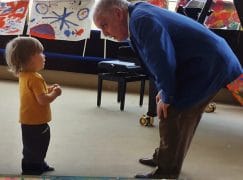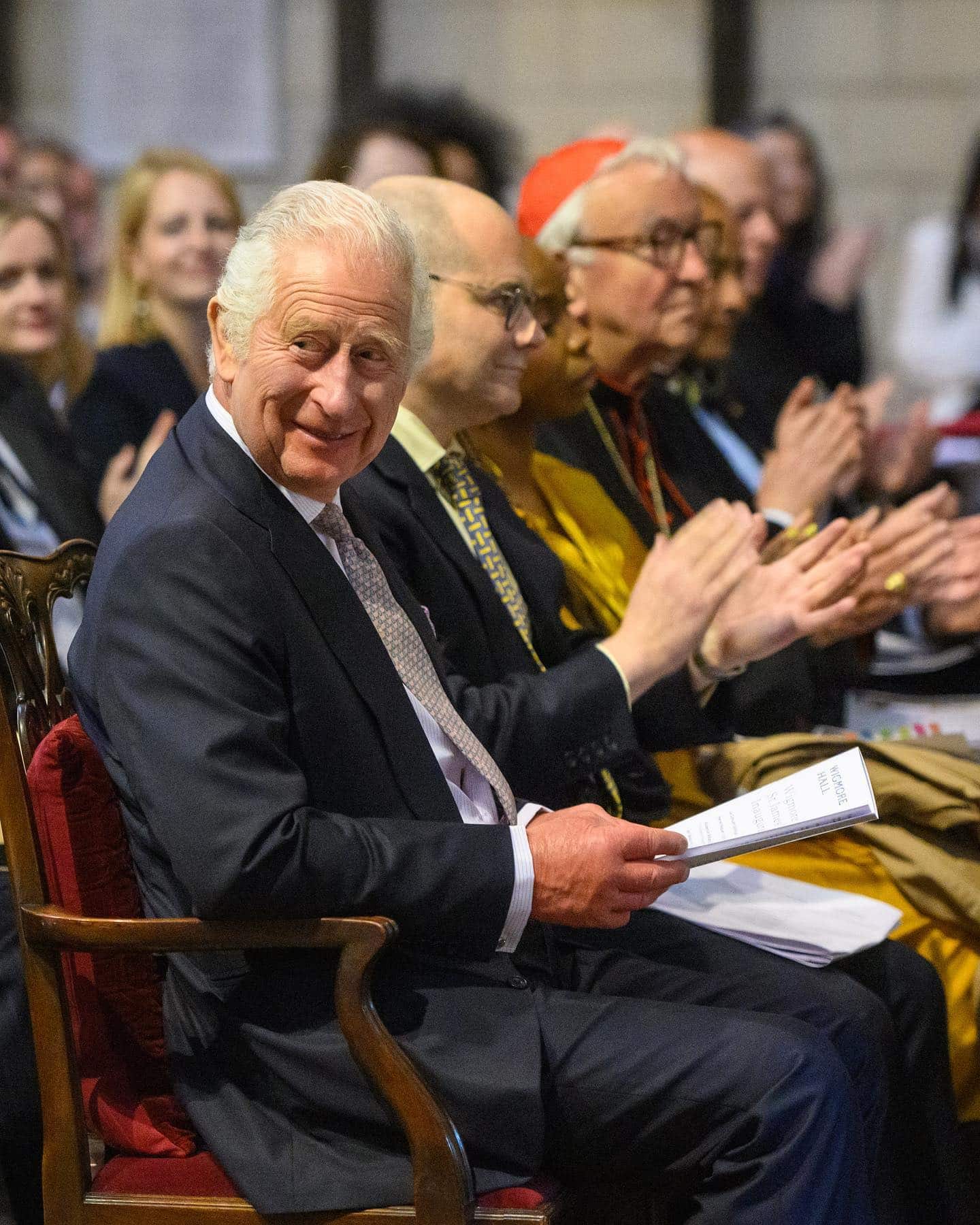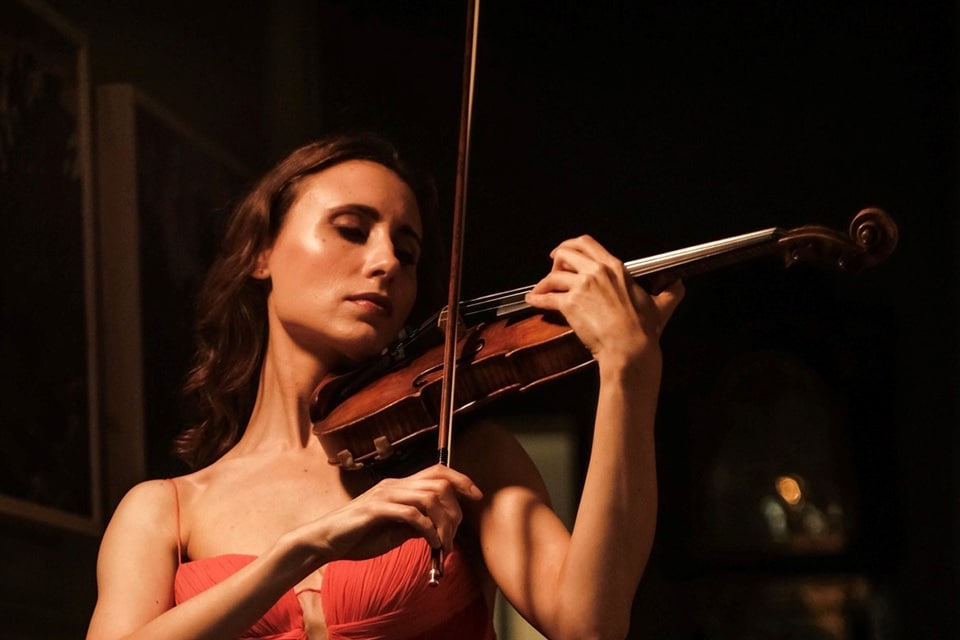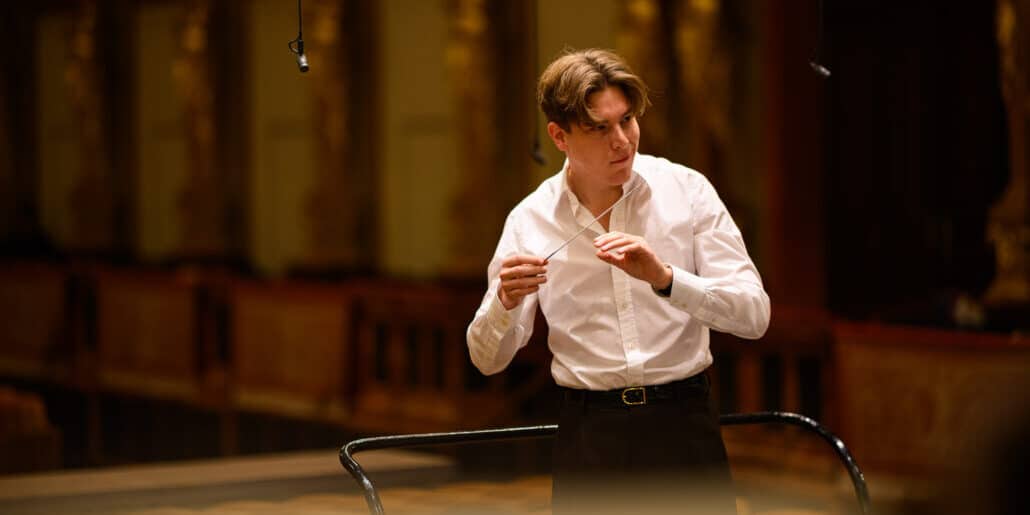I’m playing in Daniel Barenboim’s kindergarten
mainOur string quartet diarist Anthea Kreston covers Berlin wall to Wall:
As with all of our intense rehearsal periods, our final rehearsals are bursting with last-minute requests. Thoughts which have come to one or another of us while asleep, during our busy days, in snippets of remembered lessons with our teachers during our formative years, or simply by divine (or earthly) intervention. The pressure of gigantic venues, and presenting this somewhat radical program – two of Mozart’s late “Haydn” quartets (590 and Dissonance) surrounding the brooding and second Viennese-ey Bartók 2 – in venues from Paris to Vienna to London, and then on to Asia and the US – add a sense of urgency, of responsibility to our forefathers and our expectant audience. We don’t simply play for the moment – we play for the past, the present, and the future.
The challenge – to somehow contain and tame the tangle of ideas, emotions and desires – to bring together under one roof all the experiences of these four road-wearied and hardened artists – this is exhilarating – and because it is nearly impossible, the results are electric, at least from my place from within this undulating, swirling, miniature universe.
I leave home early in the mornings – the lunches are packed, gloves and hats on – the girls dropped at school, my canning-jar of hot tea wrapped and put in my bag, and here I am, on my way to Potsdamer Platz. From there I normally bypass the next connection, preferring to get a brisk walk on my way to the Musical Kindergarten – nestled in a modern high-rise in the bustling center of East Berlin.
This is Daniel Barenboim’s idea, spontaneously proposed on tour several years ago – and what has grown from this idea is magic. He has offered us a wonderful rehearsal space in this place – begun as a way to offer “education by and with music” to the children of his musicians in the Staatskapelle. His enthusiasm and vision brought this place into realization – a public school for ages 1-6 – where dedicated teachers and staff have designed an environment to create what he calls “a revolution from below” – building educational bridges through music which tie together the rich history of our musical past and future.

Regular visits by Barenboim and other top-flight musicians enrich this environment, and there are often small groups of children of varied ages sitting on mats, listening to our rehearsals. During snack time, the door to the eating area is left open, and we can hear the clink of miniature spoons and cups as we continue to search for our Quartet truth, working in detail as tiny attentive ears observe us.
Our rehearsal times are split between this space and our office at the University of the Arts in the heart of West Berlin – just off the sparkle and ritz of Kurfürstendamm – the 5th Avenue of West Berlin. Here we have the opportunity to mix with our colleagues and our college students. Between these two environments, between East and West, children and experience, my world is constantly shifting. These are the things that create balance, keep me in reality.
My battery is running low now, my hands nearly frozen as I finish typing with thumbs on my iPhone – I see the Kindergarten up ahead, in the morning fog. To my left is Checkpoint Charlie, and up ahead is the glorious Gendarmenmarkt, and behind is Potsdamer Platz and the home of the Berlin Philharmonic. And my home is behind us, too – our cosy home nestled in the woods, just outside of the city limits, within sight of the remnants of the Wall.
Read Anthea every Friday on Slipped Disc.






Thank you for sharing your insights of a world most of us will never be a part of. It’s good to read about Barenboim’s work in the children’s sector. Experiences of closeup performers and music will be with them all their lives and some may be motivated to become musicians. We can never really tell what sparks a light in a child’s soul.
This is just so inspiring … what children grow up with they believe is ‘normal’ and to expose children not only to classical music but live music and musicians right there to be touched as it were, is a tremendous gift to these kids. So many nowadays have to ‘discover’ classical music later in life now that music in schools has been cut right back over the last 20 years. As always I love your diary – the mundane (jar of hot tea) and the sublime. Toi toi for the upcoming tour. Come to Australia!
With all respect for your 5th Avenue, I think that our Kurfürstendamm (which I’ve just travelled up to your fabulous Hauskonzert and back) is infinitely more classy.
Hi!
I remember having a good feed of fish and chips at a restaurant there in 2011!! Nothing too sophisticated, from memory.
Minor point, but K. 590 is one of the Prussian quartets (575, 589, 590), which Mozart’s personal thematic catalog notes as being written for Friedrich Wilhelm II. The Haydn quartets (387, 421, 428, 464, 458, 465) are an earlier bunch.